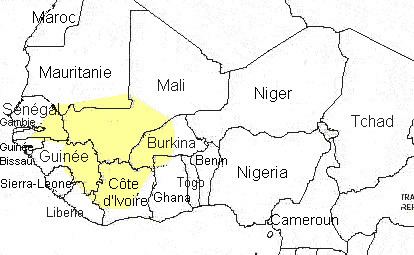Glottolog: mand1435 | ISO 639-2 / 5: man | |
 | ||
Linguistic classification: Niger–CongoMandeWestern MandeCentral MandeManding–JogoManding–VaiManding–MokoleManding Subdivisions: Manding-EastManding-West | ||
The Manding languages (sometimes spelt Manden) are mutually intelligible dialects or languages in West Africa of the Mande family. Their best-known members are Bambara, the most widely spoken language in Mali; Mandinka, the main language of Gambia; Maninka or Malinké, a major language of Guinea; and Dyula, a trade language of the northern Ivory Coast and western Burkina Faso.
Contents
Subdivisions
The Manding languages, and what distinguishes one from the rest and relationships among all of them are matters that continue to be researched. In addition, the nomenclature - being a mixture of indigenous terms and words applied by English and French speakers since before colonization - makes the picture complex and even confusing.
The Mandinka people speak varieties from the first two groups; the differences between the western and eastern branches manifest themselves primarily phonetically. While dialects of the western group usually have 10 vowels (5 oral and 5 long/nasal), the eastern group, typified by Bambara, has 14 vowels (7 oral and 7 nasal):
In addition, Sininkere (Burkina Faso) is of unclear placement within Manding.
Writing
The Manding languages have a strong oral tradition, but also have written forms - adaptations of Arabic and Latin alphabets, and at least two indigenous scripts.
